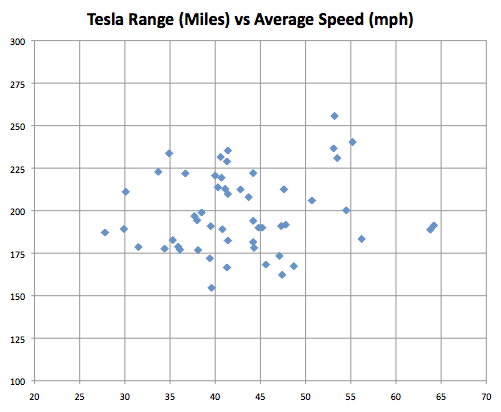drees said:
I suspect that the "real life" range when not using range is actually slightly below 200 miles as I believe that range mode simply lets you charge the battery an extra 10% and discharge the battery an extra 10% so normally you use 80% of the full capacity of the battery.
I'd say the real range of the car is 244 miles. Actually driving that far on a single charge is not a good idea, in much the same way that driving a gas burner until the tank is empty is not a good idea. But, if you really want to drive the full range of the car every day, there's nothing stopping you from doing it.
I really hope people aren't buying Roadsters expecting to use that 244-mile range every day. They'll be sadly disappointed. Much like the one EV1 driver I've heard of that didn't like the car because he bought an EV with a 75-mile range (one of the original lead-acid models) for a daily commute of 74 miles. (I believe he was misled by the sales people into thinking the car would work for him, a rare exception to the rule of competent, passionate Saturn sales people and enthusiastic, happy EV1 drivers.) The reason I'm here posting to this thread is to help ensure this doesn't happen to any Leaf customers that are paying attention.
Since it's better for the lifetime of the battery pack to stay out of the top and bottom 10%, Tesla makes it possible, and in fact encourages us, to do all of our normal, daily driving in the middle 80% of the battery pack so that we protect the health of the battery pack and hopefully extend its useful life well beyond the (admittedly anemic) warranty period.
If you want to beat up Tesla for fudging the range numbers, I think their biggest offense is saying that it has a range of 244 miles and can be fully charged in as little as 3.5 hours. The 3.5 hour number is for a full standard mode charge, a full range mode charge takes more like 5 hours.
But this has got nothing to do with my graph. I chose to extrapolate the energy use of the many drive segments up to the full range mode battery pack. I could just have easily scaled it up to the equivalent 195-mile standard mode range, but that would only change the scale on the graph and my final statement would have noted how "nearly all of the points are below the 195-mile standard mode range."
The real question before us is what Nissan means by their range numbers. Are those numbers for staying within the bounds of the "nice" battery usage, or is it more like Tesla's range-mode numbers that imply a shorter battery life if used daily? Even more to the point, what is Nissan's warranty on the battery pack, and can we drive the full range of the battery that's implied by their range numbers every day and not shorten the battery life or void the battery warranty.
FWIW, for my Roadster, the standard mode charge usually shows 192 or 193 miles, meaning I can drive that far on flat at 55, with a 10% reserve that I can access at any time by switching to range mode. The 244-mile range is only interesting for longer trips where I'm going to be willing to do a little planning, make allowances for not getting that range unless I'm driving on level freeway at a steady 55 mph, and I still reserve a buffer at the bottom as a safety margin. I know I can always drive 150 miles in standard mode under pretty much any normal driving conditions without even looking at the charge meter, beyond that I need to think about what I'm doing.
What's the "don't need to think about it" number for the Leaf? What's the best case freeway number for planning a long trip, the point from which I moderate my driving, subtract out a safety margin, and plan for charging stops? The answers to both of those question are not absolute and depend on the driver, the roads, and the climate. So far, Nissan hasn't given us enough consistent information that I can determine that number for me. With the Roadster's ridiculous range, so far above 99.5% of everyone's daily driving needs, the details didn't matter that much for daily driving. It's a far more interesting issue for the Leaf.





